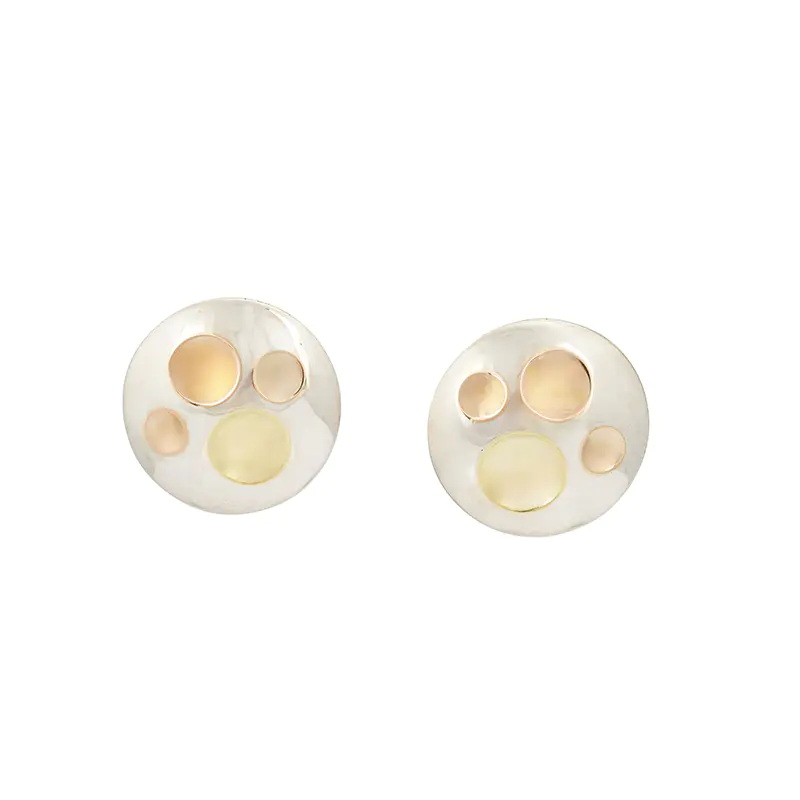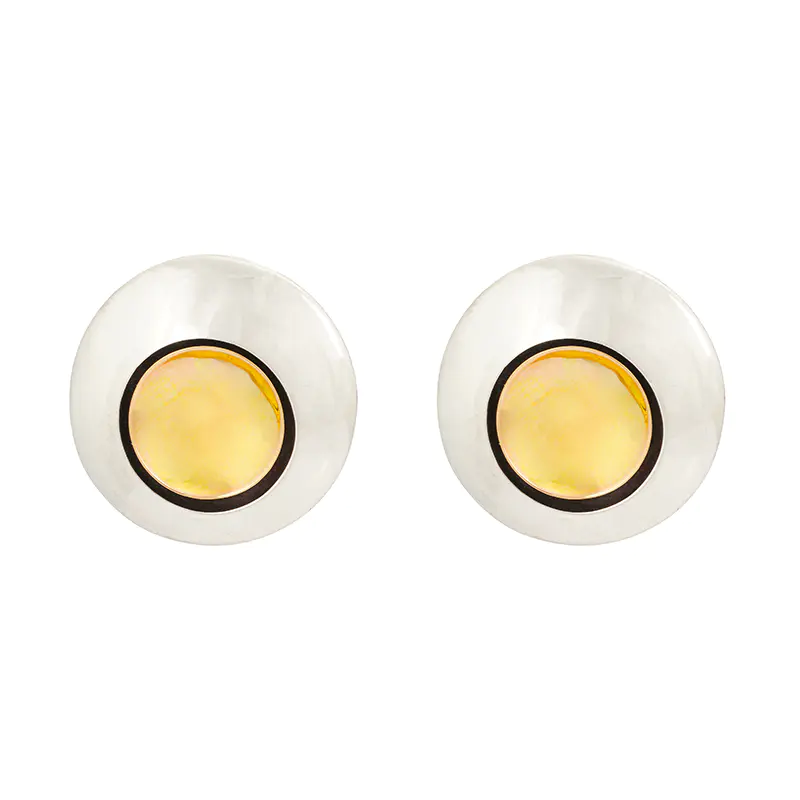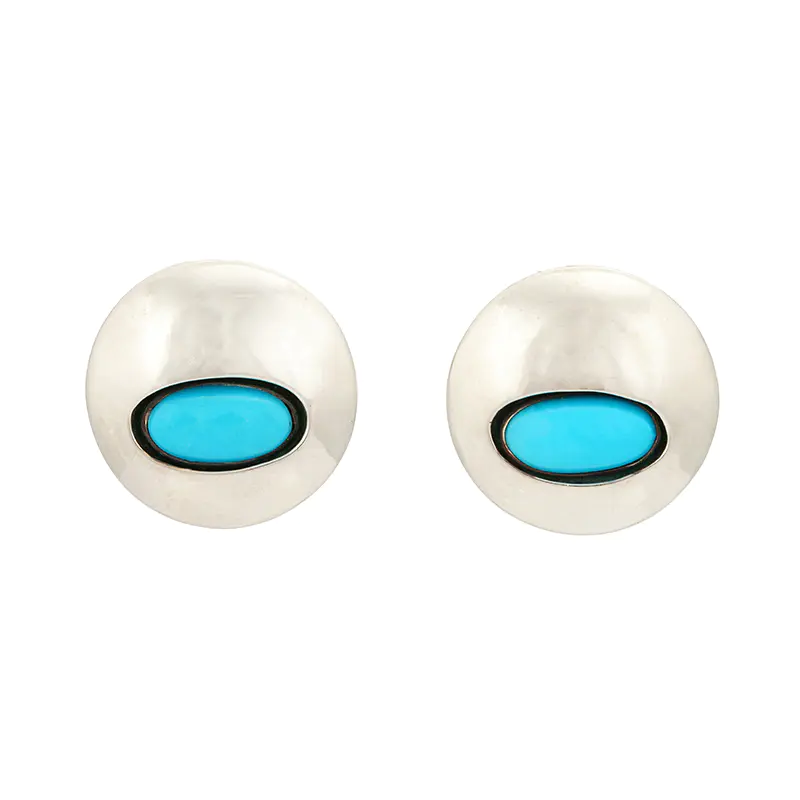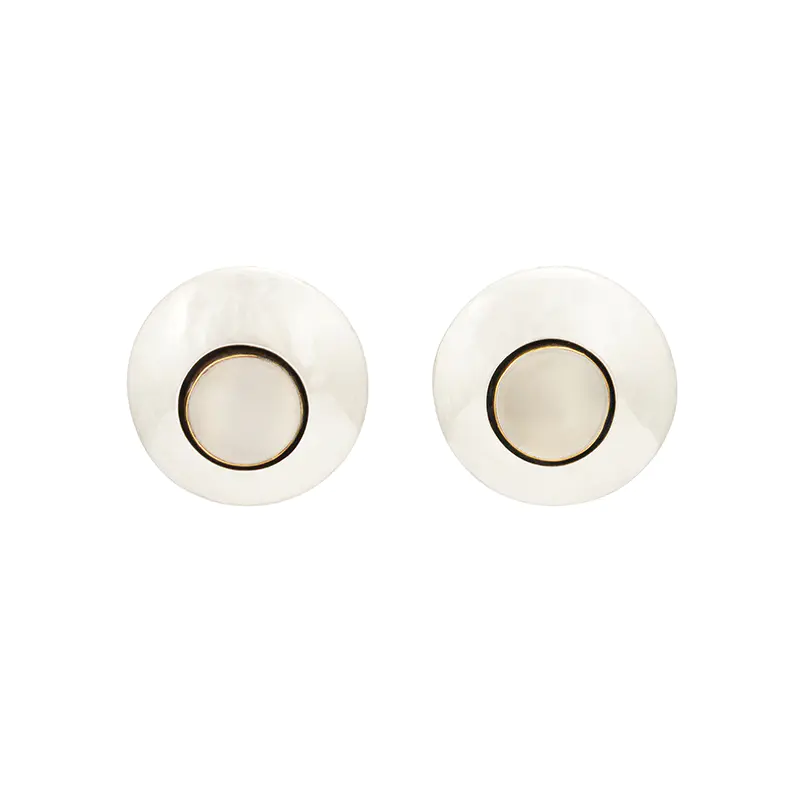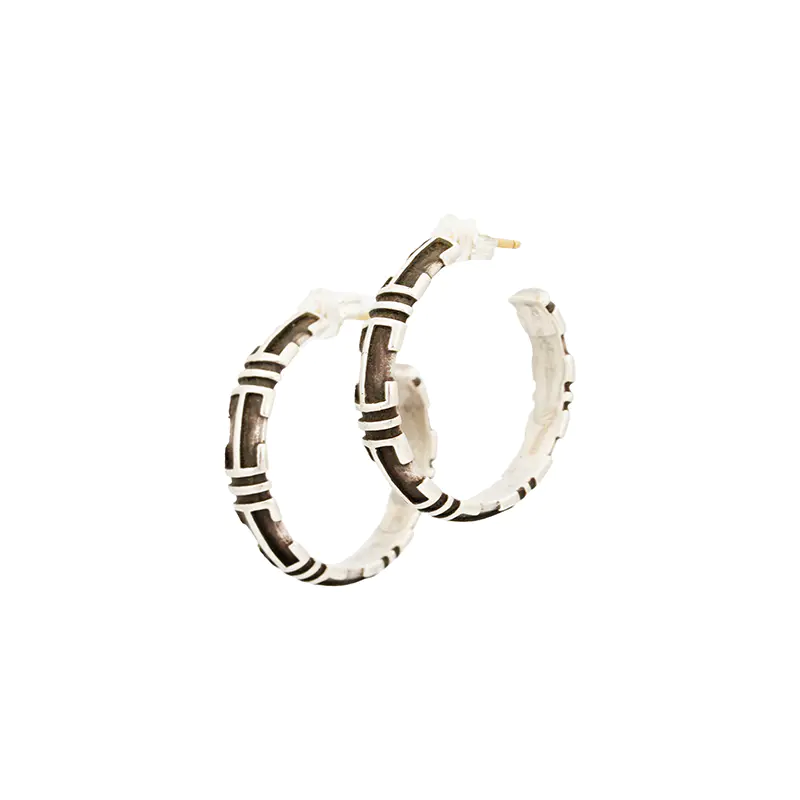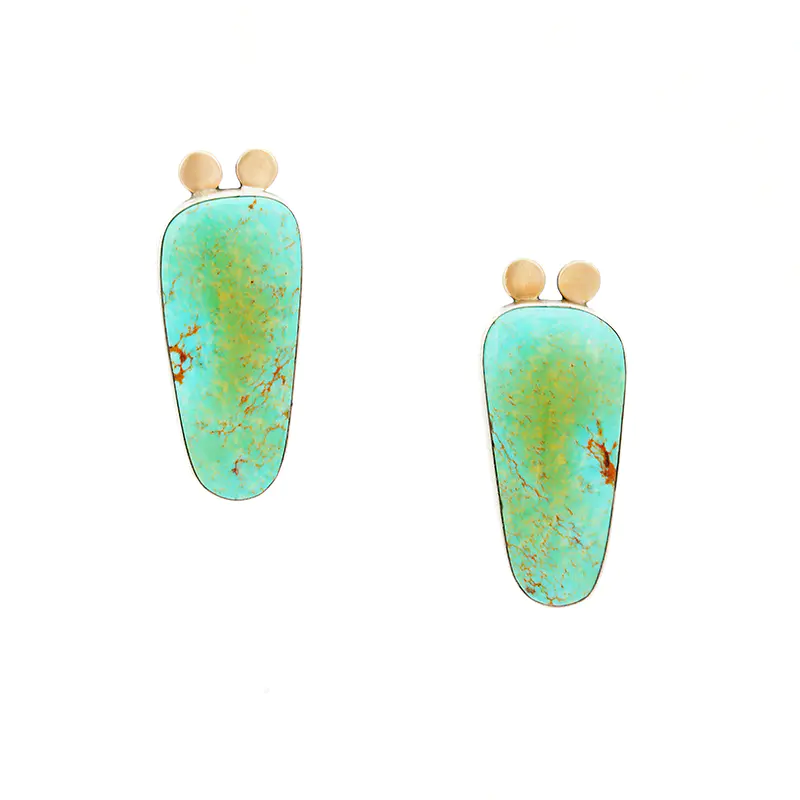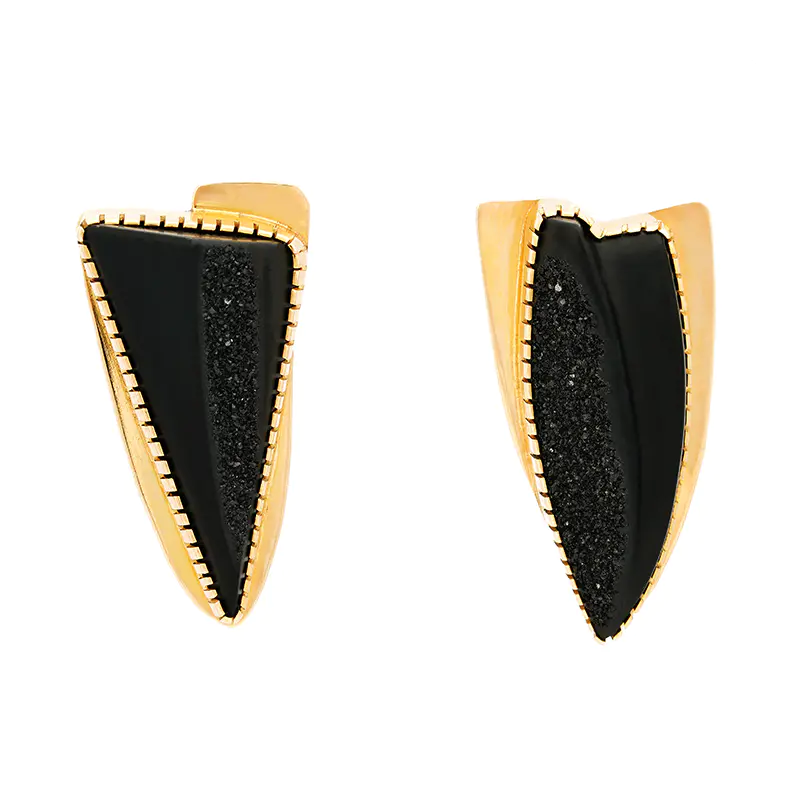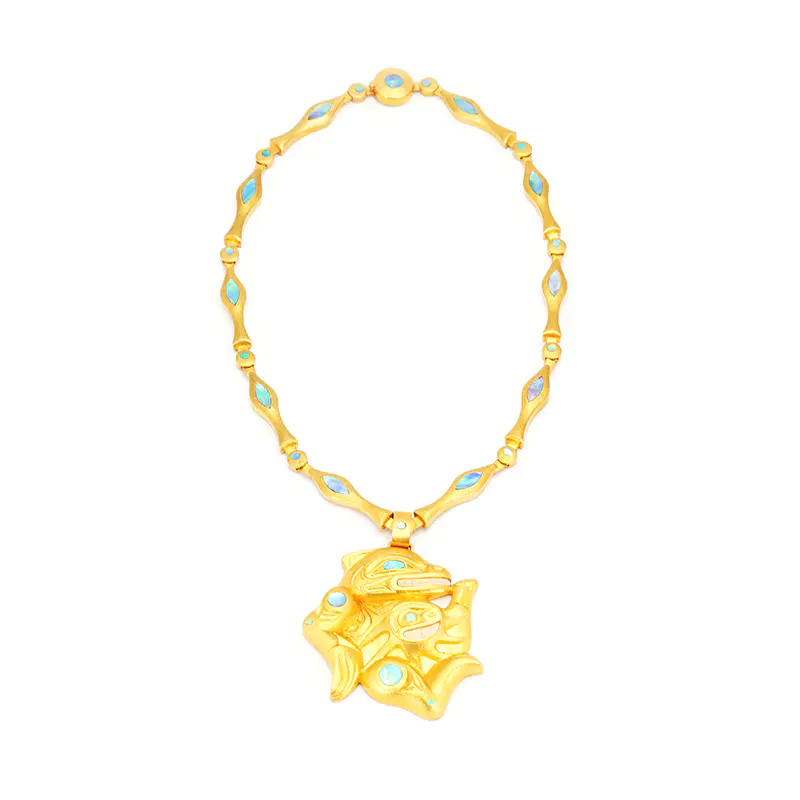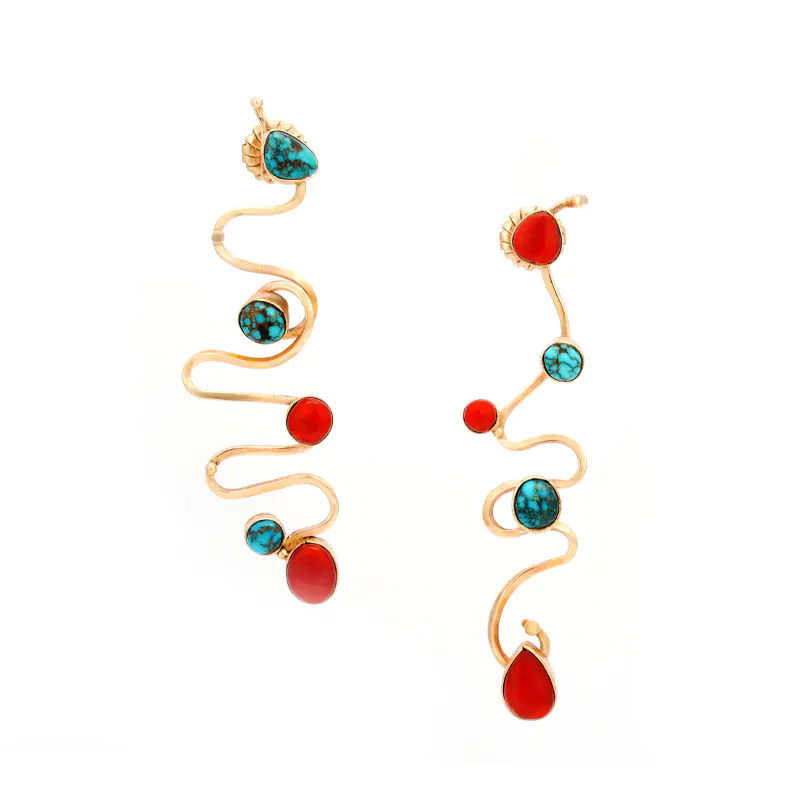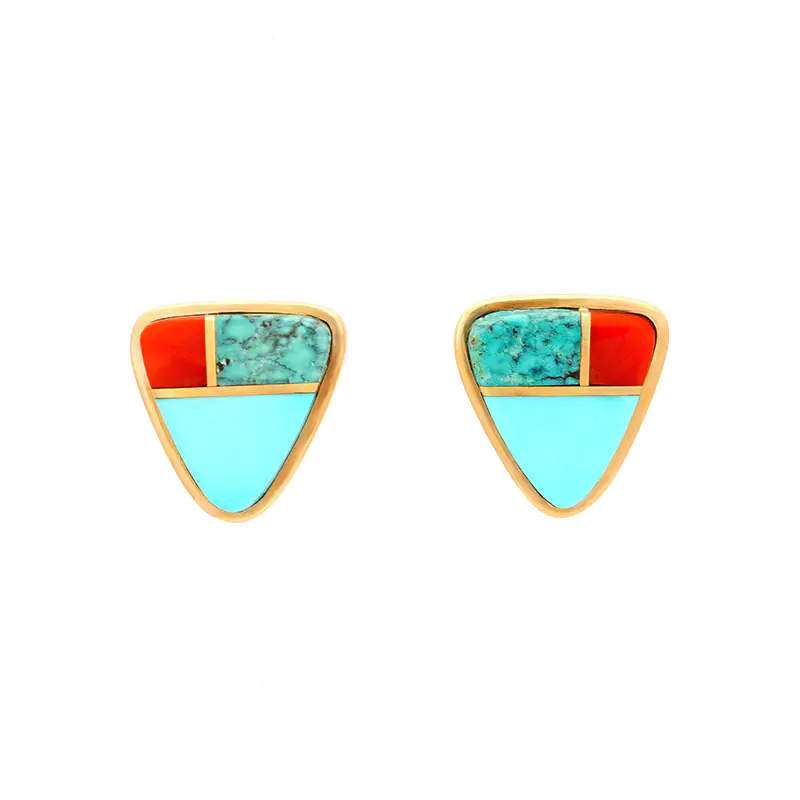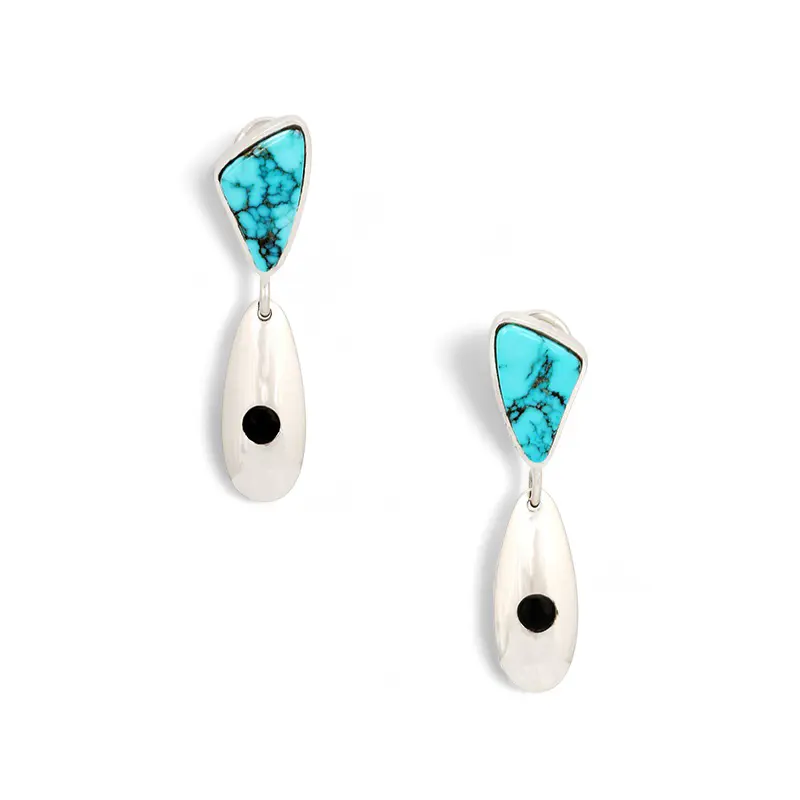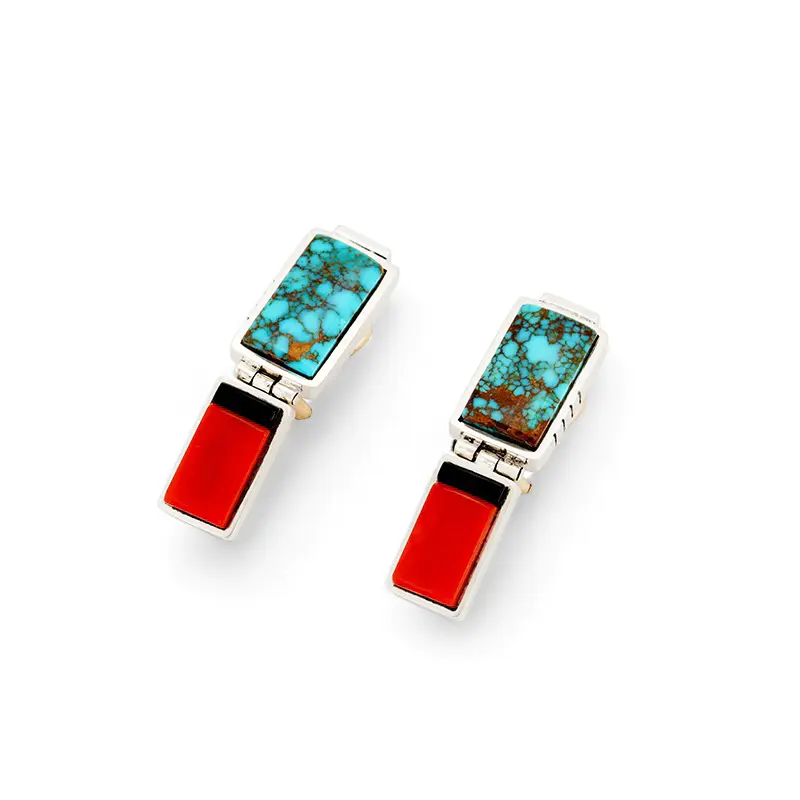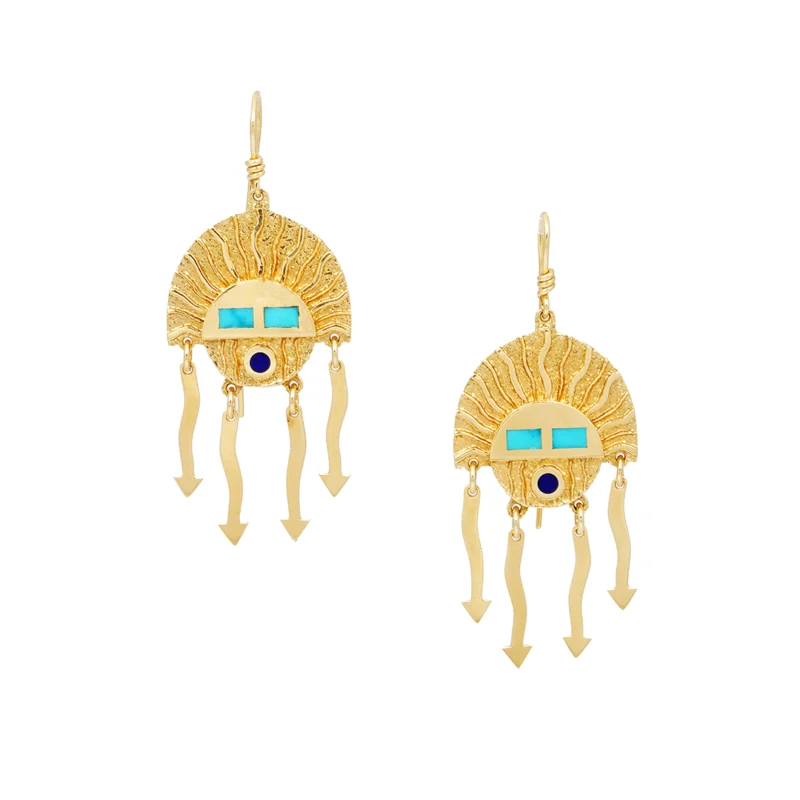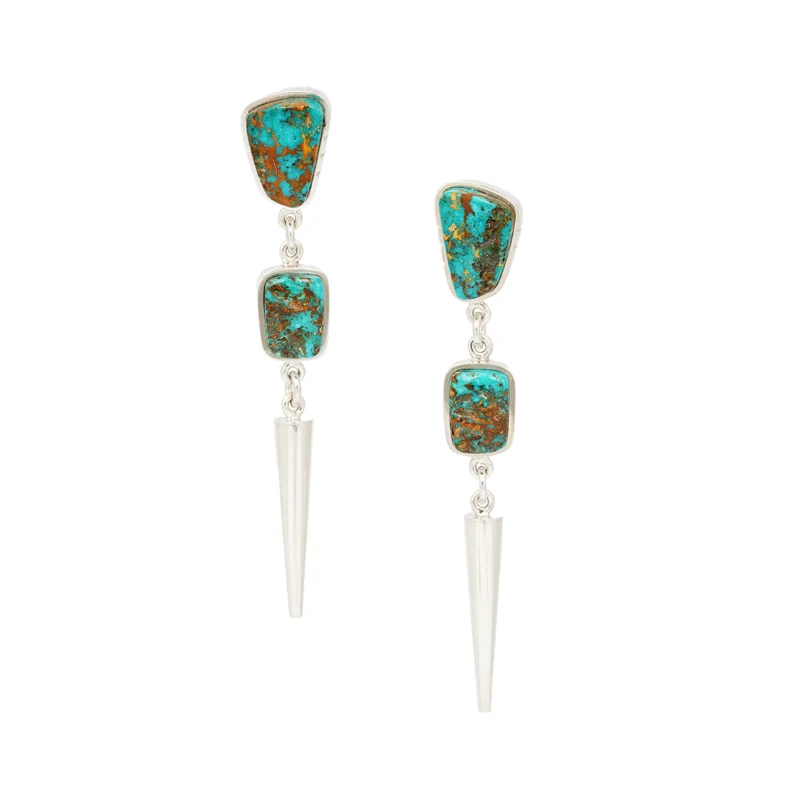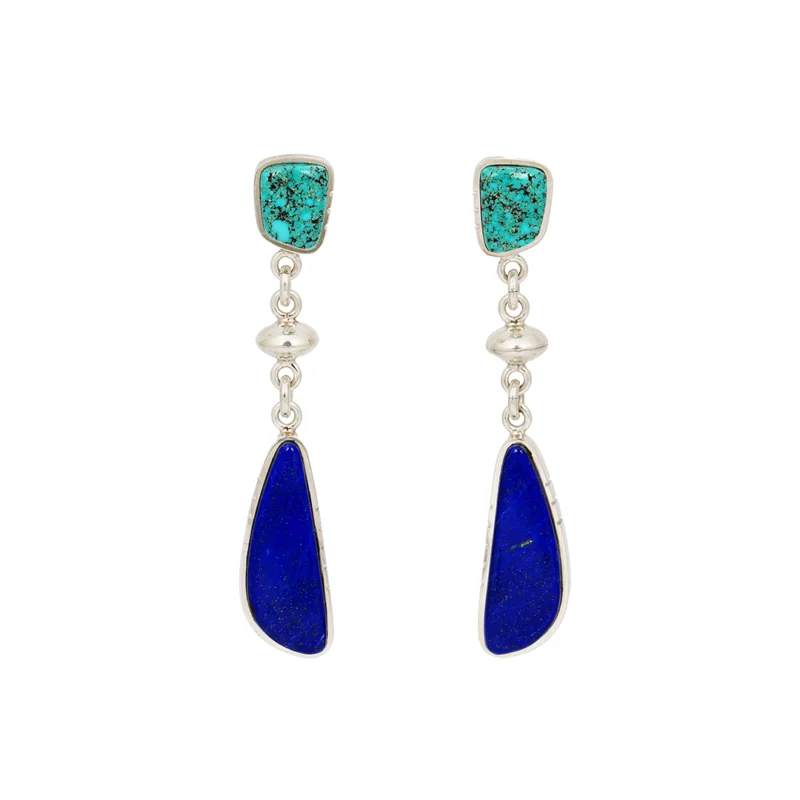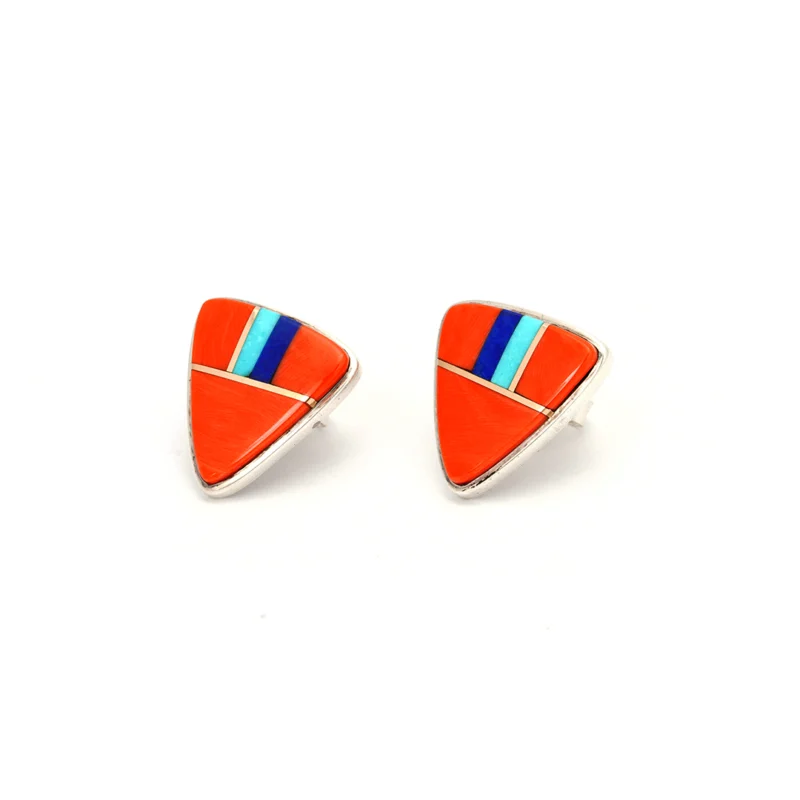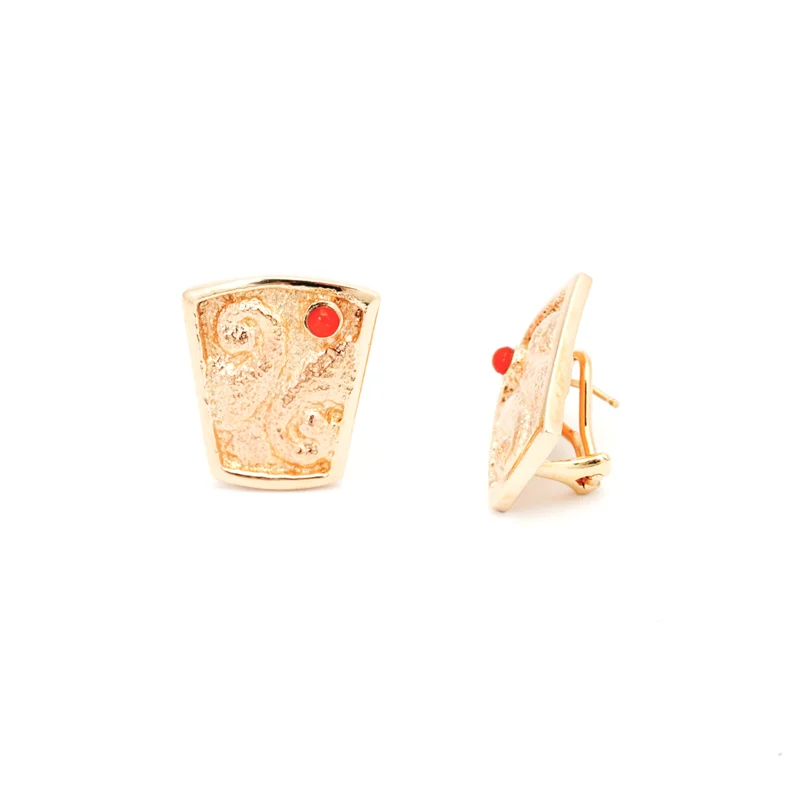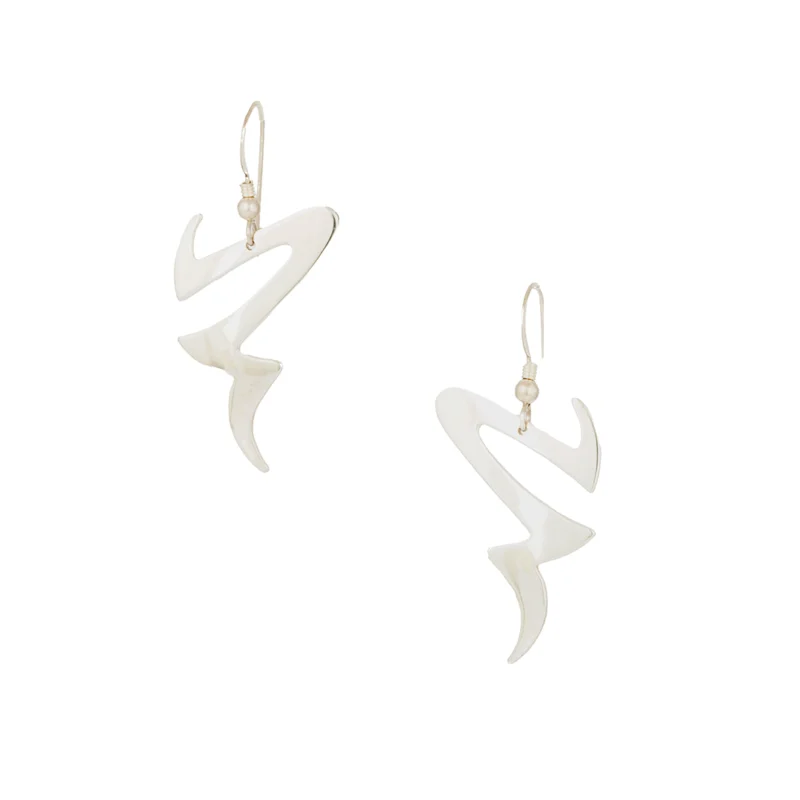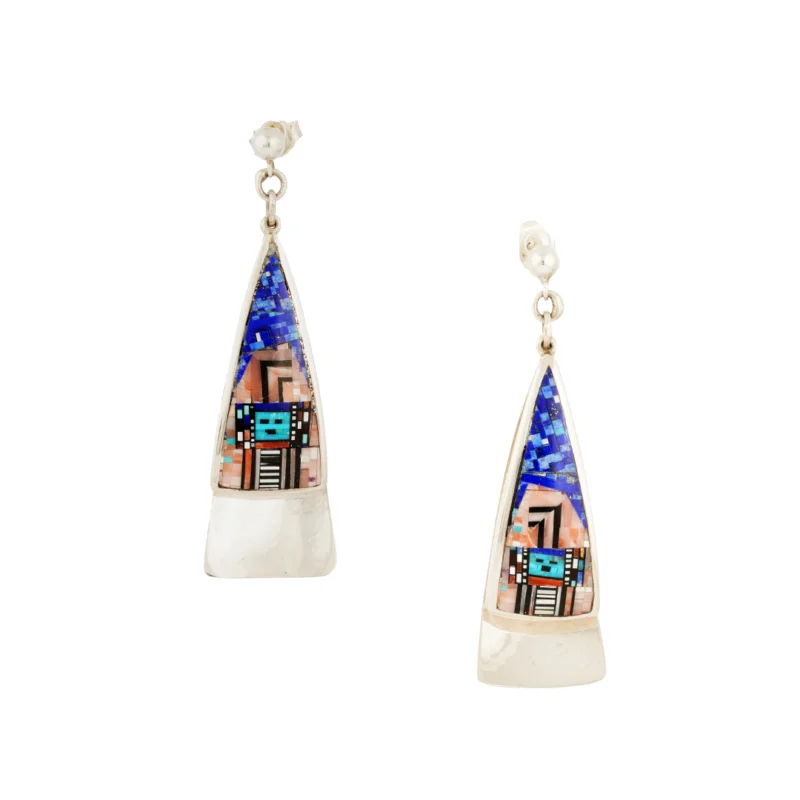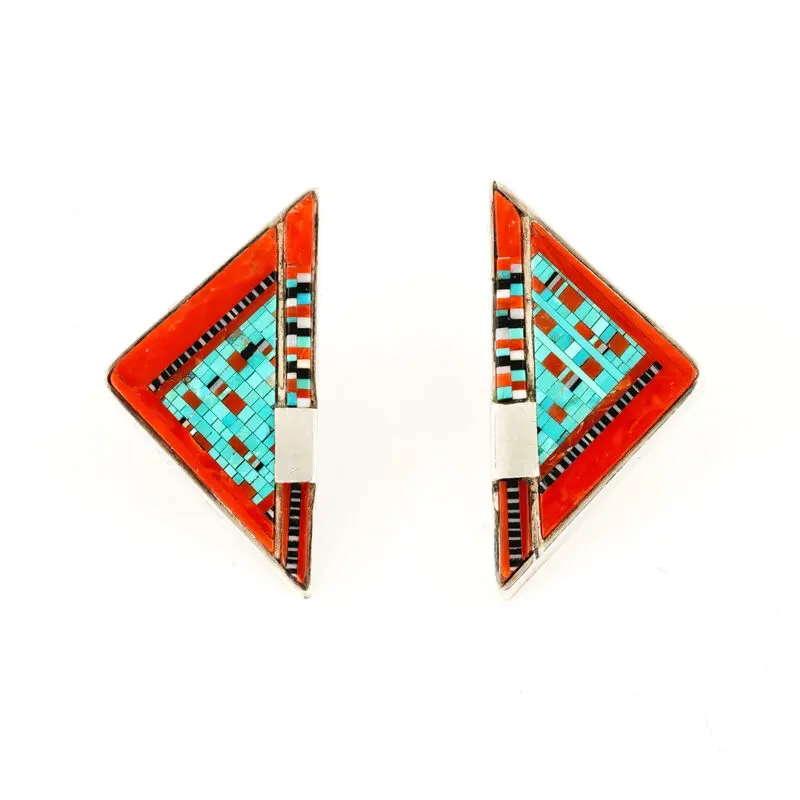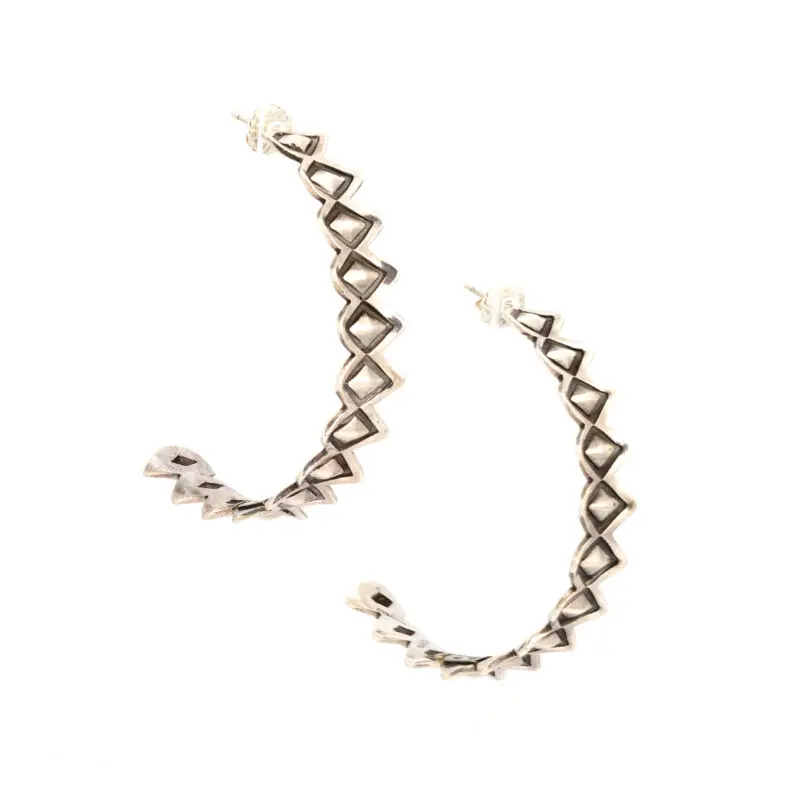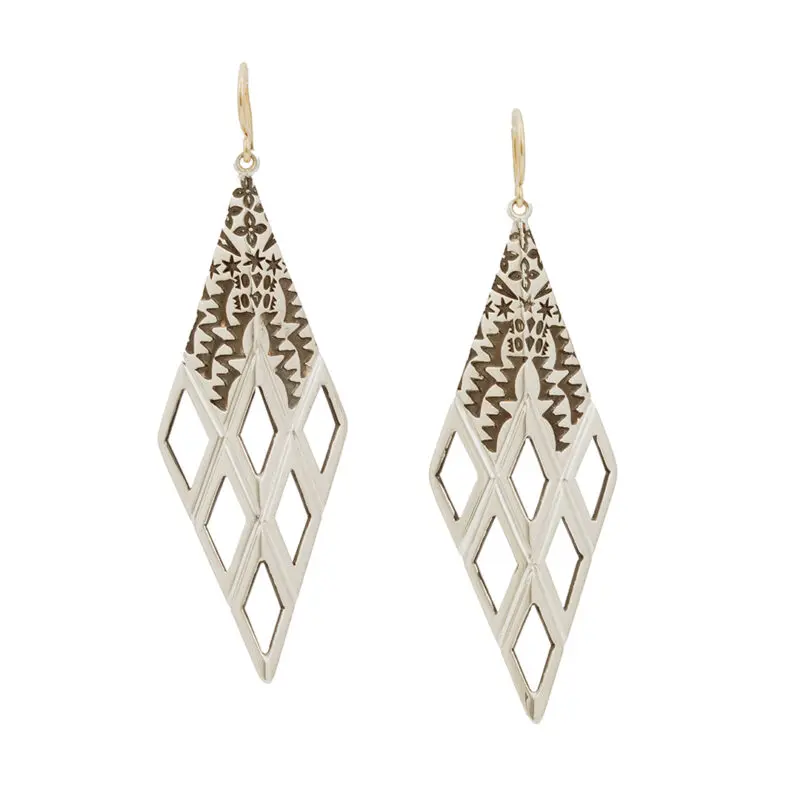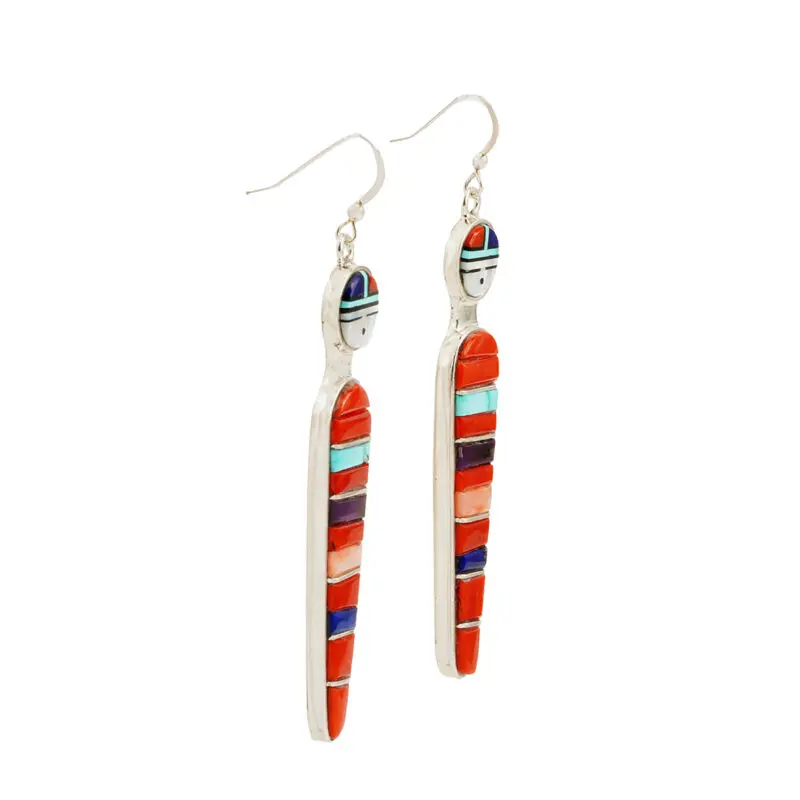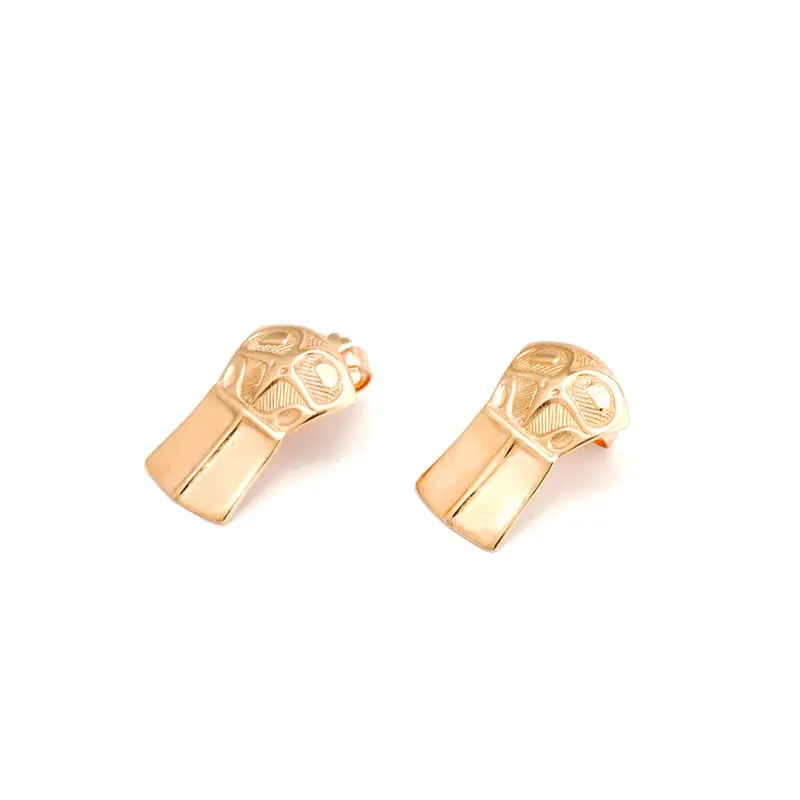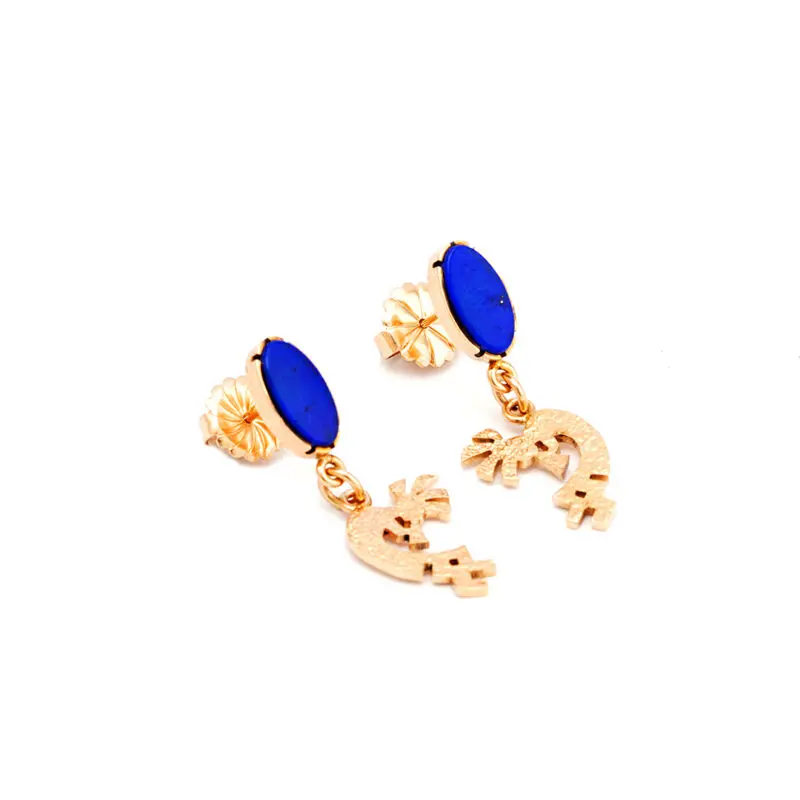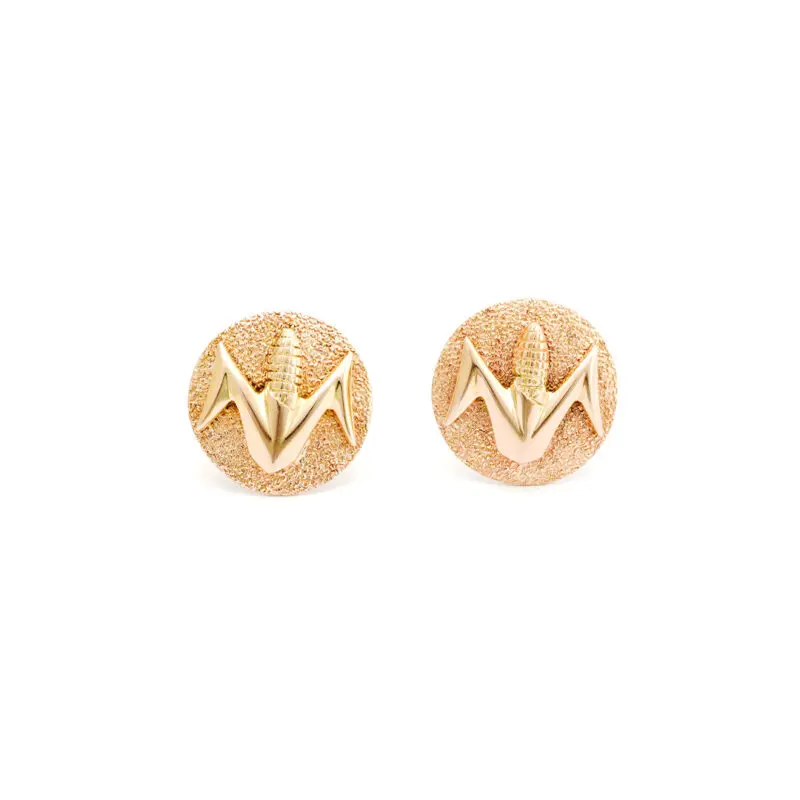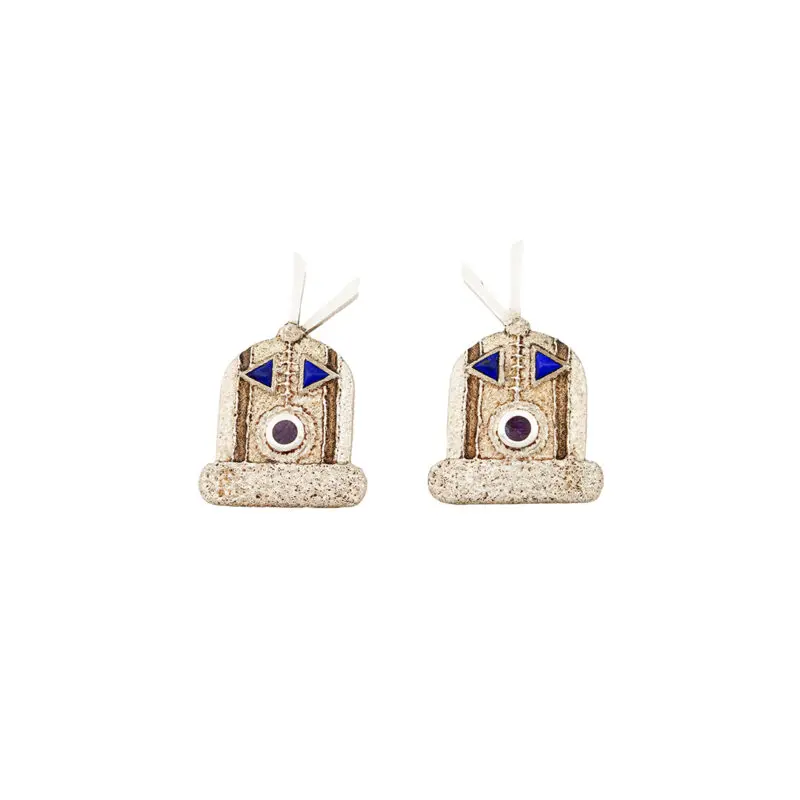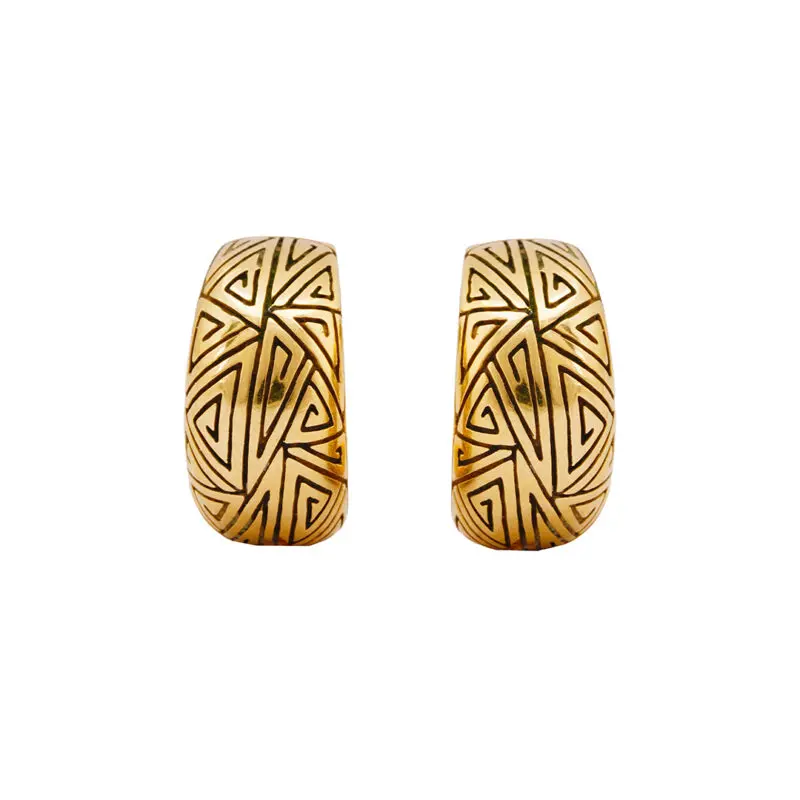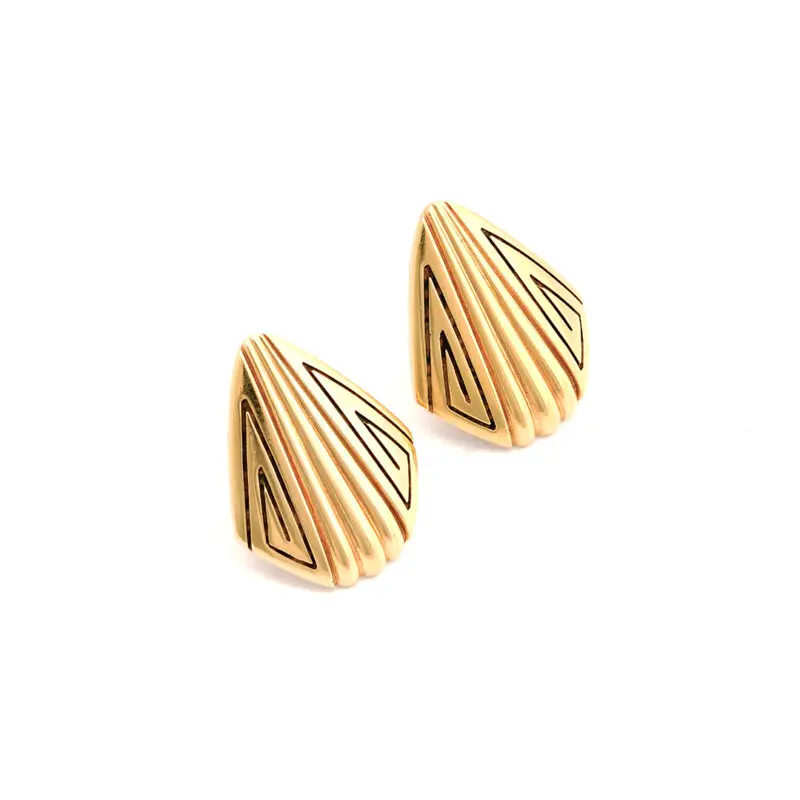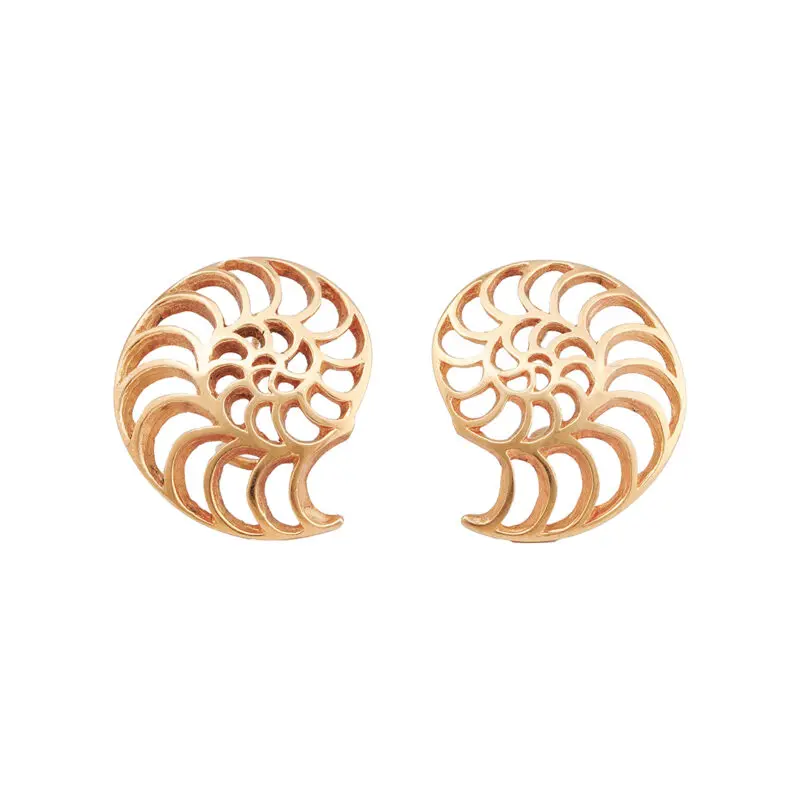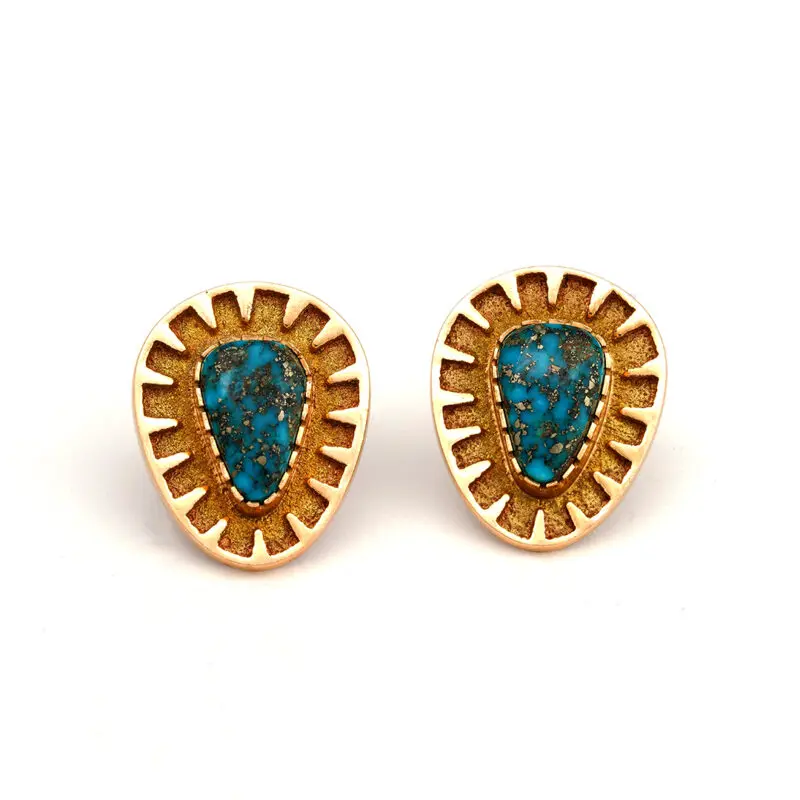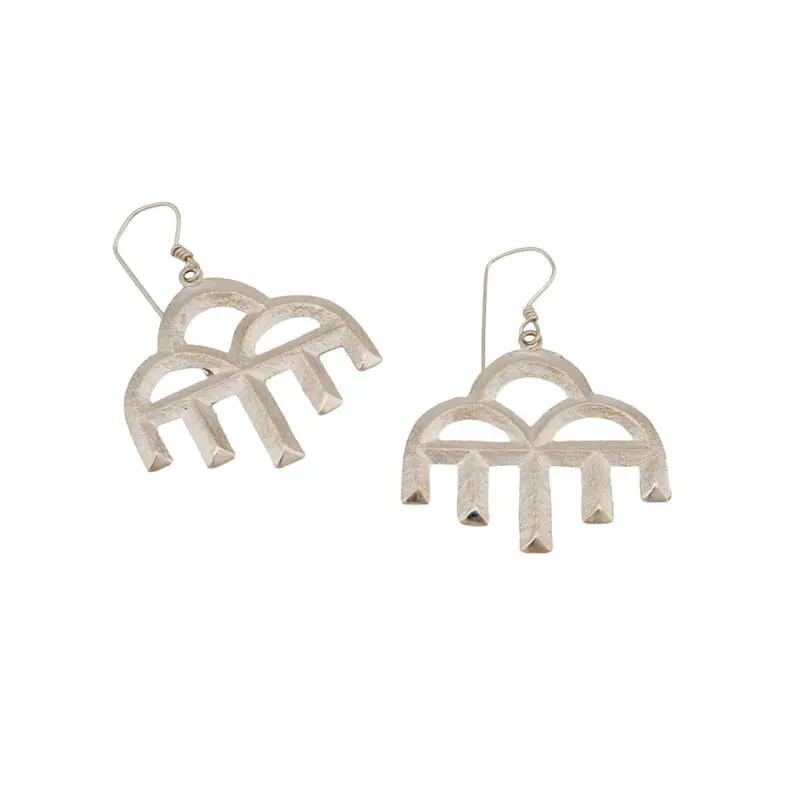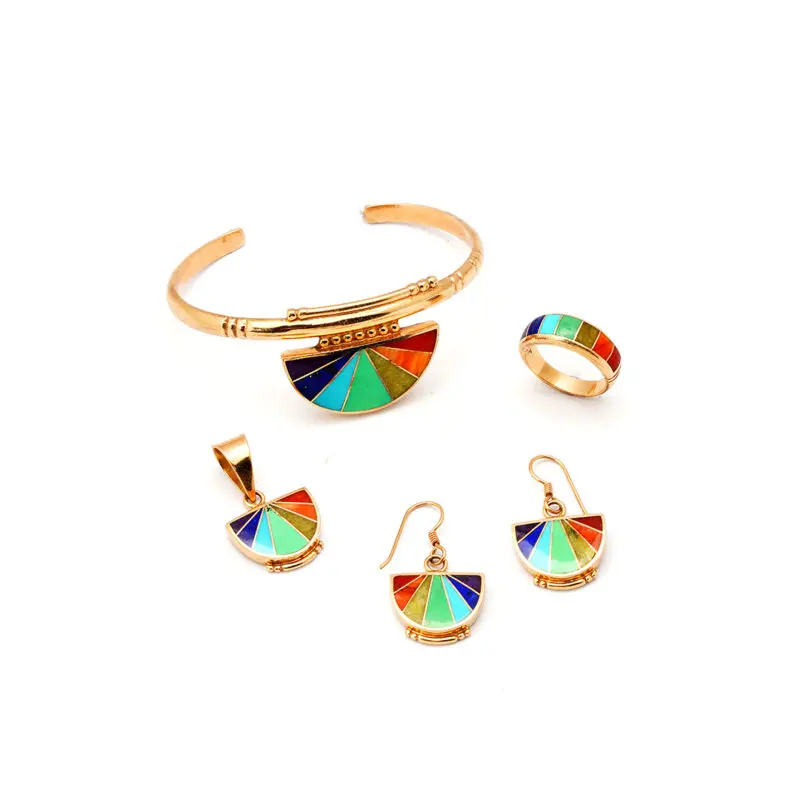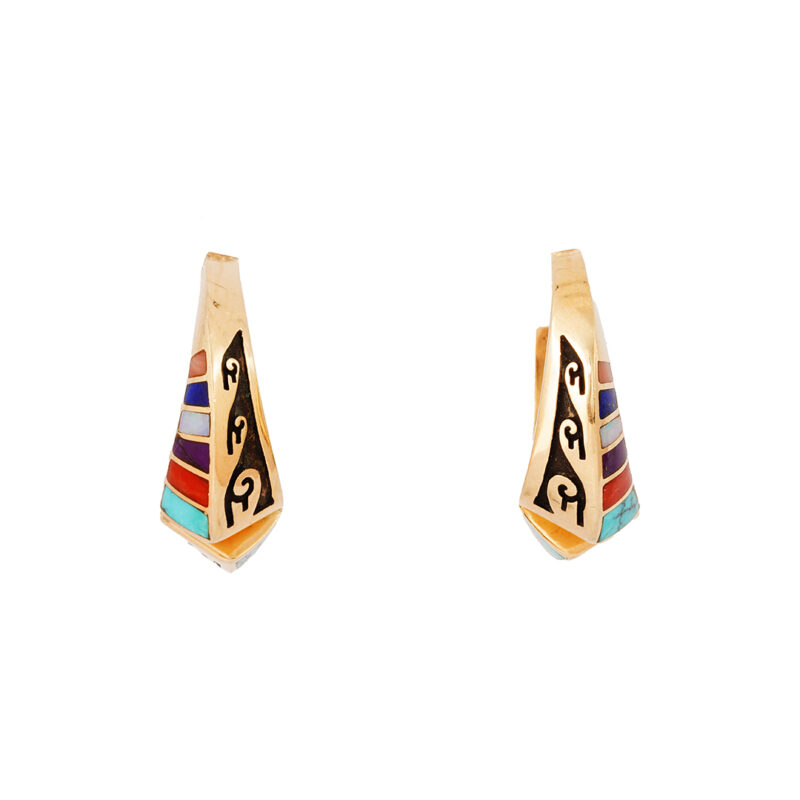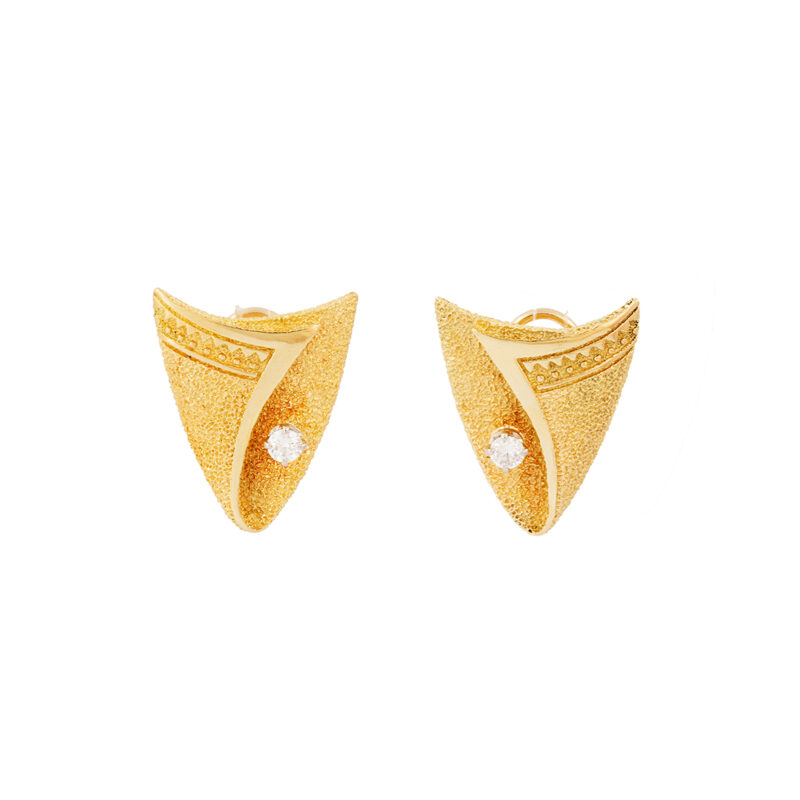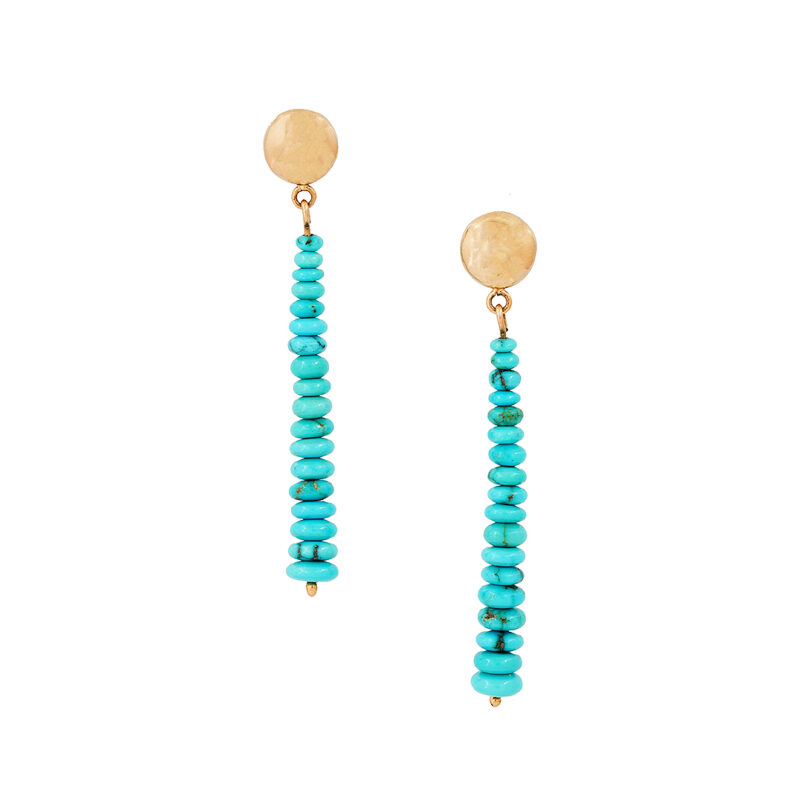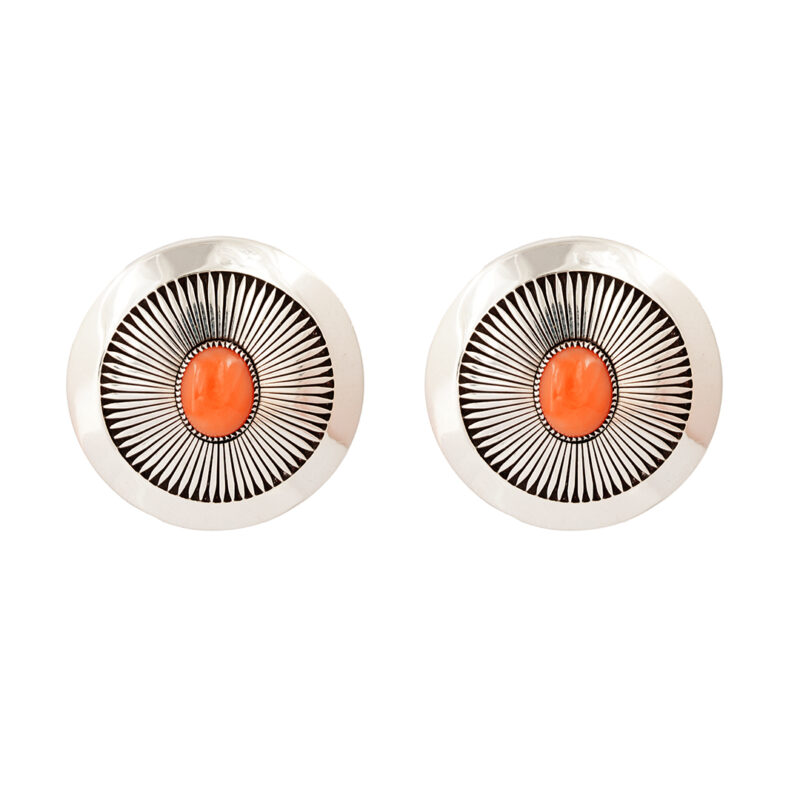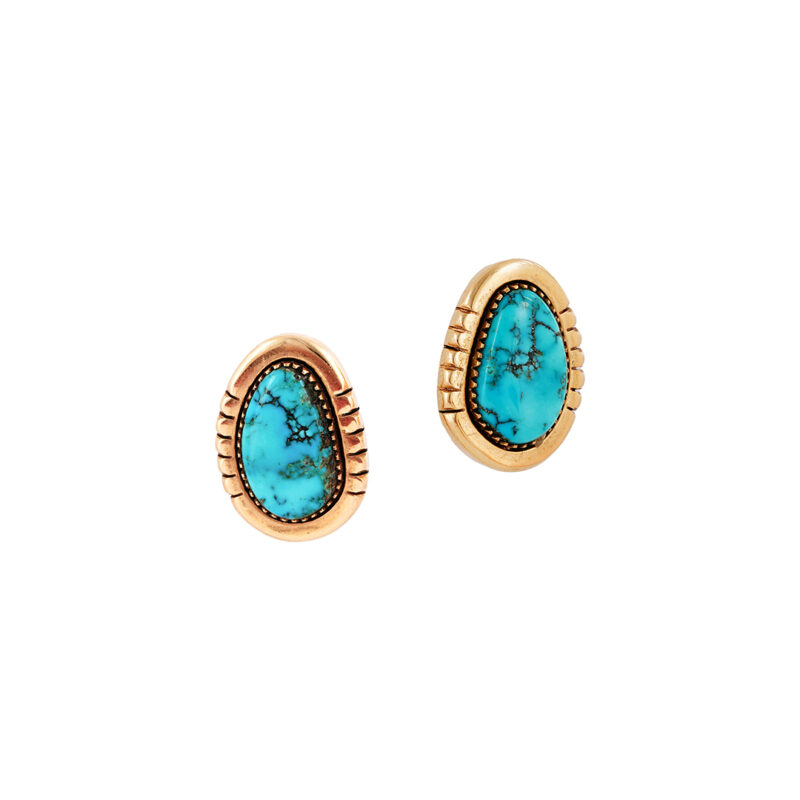Earrings
The History of American Indian Earrings: From Ancestral Forms to Contemporary Art
Earrings have long been a vital form of expression in American Indian cultures, symbolizing not only beauty and identity, but also spiritual connection, status, and artistry. Across centuries, Indigenous jewelers have crafted earrings that reflect ancestral knowledge, tribal design traditions, and the continuous evolution of form and meaning. At Faust Gallery, we celebrate this enduring legacy—from historic adornments to today’s visionary works.
The historic roots: natural materials and cultural significance
Before the introduction of metalwork, Indigenous communities across North America created earrings using materials found in their environments: shell, stone, turquoise, bone, and wood. These early earrings were carefully shaped and worn for both personal and ceremonial purposes. Among Pueblo and Plains cultures, earrings often marked rites of passage, clan identity, or spiritual beliefs.
The development of silversmithing among the Navajo in the mid- to late-1800s—and later among the Zuni and Hopi—ushered in a new era of jewelry-making. By the early 20th century, Native artists were creating earrings in silver, often set with turquoise, coral, or shell, ranging from simple buttons to elegant dangles. These pieces blended cultural storytelling with stylistic influences from Spanish, Mexican, and Anglo-American design.
Mid-20th century to vintage styles: craftsmanship refined
During the 1930s to 1970s, Native jewelers brought increasing technical mastery and stylistic range to earring design:
-
Zuni artists became renowned for their inlay, needlepoint, and petit point earrings, setting tiny stones into floral and geometric compositions with stunning precision.
-
Hopi artists, through the Hopi Silvercraft Cooperative Guild, created earrings using their now-signature overlay technique, often incorporating symbolic and spiritual imagery.
-
Navajo silversmiths crafted bold earrings using techniques like repoussé, stamping, and cluster settings centered on turquoise and coral, resulting in dramatic, wearable statements.
Contemporary voices: innovation through tradition
In the late 20th century, a new generation of artists redefined what Native earrings could be—introducing bold materials, larger scale, and conceptual design.
-
Charles Loloma (Hopi) pioneered the use of gold, lapis, coral, and wood in raised inlay earrings, transforming them into miniature sculptures.
-
Harvey Begay (Navajo), the son of master silversmith Kenneth Begay, introduced refined, modernist forms in silver and gold, known for their clean lines and sophisticated elegance. His earrings were often minimal, yet deeply expressive—a nod to both heritage and modern design.
-
Don Supplee (Hopi) brought his distinctive style to earrings using gold and rare stones, often inspired by nature, Hopi symbology, and fluid, organic forms. His work is known for its high polish and refined overlays.
-
Darryl Dean Begay (Navajo), part of a newer generation of master jewelers, creates earrings that often reference Navajo cosmology and storytelling, using tufa-cast silver, precious stones, and high-relief imagery to convey depth and meaning. His earrings stand as narrative art—worn close, but speaking volumes.
Artists like Raymond Yazzie, Jesse Monongya, Ric Charlie, Carl and Irene Clark, and Verma Nequatewa (Sonwai) continue to evolve earring design through micro inlay, tufa casting, and mixed materials—elevating this once utilitarian form into a global expression of Native creativity.
A living tradition
Today, American Indian earrings range from delicate, heirloom-worthy vintage pieces to bold, modern works collected and worn around the world. They represent a deep continuity—where ancestral techniques, cultural symbolism, and innovative artistry intersect in forms that are both wearable and timeless.
At Faust Gallery, we are proud to represent the full story of Native earrings, from their ancient roots to the present-day masterpieces of artists like Don Supplee, Harvey Begay, Darryl Dean Begay, and many more. Each pair is chosen for its craftsmanship, authenticity, and ability to speak through form—offering collectors a meaningful connection to culture, tradition, and contemporary Native art.
-

Rawin, Kim Silver and Gold Earrings
$1,350.00 Add to cart -

Rawdin, Kim Mabe Pearl Earrings
$880.00 Add to cart -

Rawdin, Kim Concave Earrings
$880.00 Add to cart -

Rawdin, Kim Turquoise Earrings
$680.00 Add to cart -

Rawdin, Kim Moonstone earrings
$880.00 Add to cart -

Diffrient, Scott Silver Hoop Earrings
$600.00 Add to cart -

Romero, Mike Bird Royston Earrings
$800.00 Add to cart -

Bird, Gail and Johnson, Yazzie 18K Gold Earrings
Read more -

Neel, David 22K Gold Otter & Urchin Necklace, Ring And Earring Set
Read more -

Poblano, Veronica 14K Gold Earrings With Turquoise And Coral
Read more -

Sonwai (Verma Nequatewa) 18K Gold Shield Inlaid Earrings
$3,200.00 Add to cart -

Little James, Sterling Silver Dangle Earrings With Turquoise and Black Jade
$1,675.00 Add to cart -

Little, James Sterling Silver Red Mountain Inlaid Earrings
$1,985.00 Add to cart -

Tsosie, Boyd Necklace and Earring Set
Read more -

Monongya, Bo 18K Gold Stud Kingman Earrings
Read more -

Charlie, Ric 18K Gold Navajo Yei Earrings
$7,600.00 Add to cart -

Supplee, Don Kingman Turquoise Silver Dangle Earrings
$1,600.00 Add to cart -

Supple, Don Sterling Silver Turquoise and Lapis Dangle Earrings
$1,600.00 Add to cart -

Jonathan Mike Dangle Turquoise Silver Earrings
$275.00 Add to cart -

Johnathan Mike Sterling Silver Dangle Earrings With Lapis
$295.00 Add to cart -

Jonathan Mike Sterling Silver Earrings With Turquoise
Read more -

Sonwai (Verma Nequatewa) Sterling Silver Inlaid Earrings
Read more -

Harvey Begay 14K Gold Tufa Cast Earrings
Read more -

Carl and Irene Clark Double Inlay Hoop Earrings
$6,500.00 Add to cart -

Duane Maktima Sterling Silver Earrings
$165.00 Add to cart -

Carl and Irene Clark Micro-Inaly Silver Earrings
$3,600.00 Add to cart -

Carl and Irene Clark Silver Micro-Inlaid Earrings
$2,800.00 Add to cart -

Redsun Dragon Skinn Sterling Silver Hoop Earrings
$425.00 Add to cart -

Jarad Chavez Sterling Silver Earrings
$750.00 Add to cart -

Tim Herrera Sterling Silver Earrings with Turquoise
$2,800.00 Add to cart -

Wes Willie Sterling Silver Coral Earrings
$2,000.00 Add to cart -

David Neel 14K Eagle Design Earrings
$1,500.00 Add to cart -

Don Supplee 14K Gold Kokopelli And Lapis Earrings
$1,100.00 Add to cart -

Andy Lee Kirk 14k Gold Post Earrings
$1,400.00 Add to cart -

Harvey Begay 14K Gold Styalized Corn Earrings
$3,600.00 Add to cart -

Ric Charlie Sterling Silver Yei Earrings
$1,900.00 Add to cart -

Harvey Begay 14k Three Strand Gold Earrings
$1,400.00 Add to cart -

Harvey Begay 14K Gold Earrings
Read more -

Harvey Begay 14K Gold Earrings
$3,200.00 Add to cart -

Harvey Begay 14K Gold Clip Earrings
$1,800.00 Add to cart -

Al Nez 14K Turquoise Earrings
$3,800.00 Add to cart -

Tim Herrera Sterling Silver Rain Cloud Earrings
$300.00 Add to cart -

Ray Tracey Gold Original Handmade Set
$9,400.00 Add to cart -

Lonn Parker 14K Gold Inliad Earrings
$2,400.00 Add to cart -

James Little 18K Gold Blanket Design Diamond Earrings
Read more -

Ric Charlie 14K Gold Clear Lone Mountain Earrings
$2,850.00 Add to cart -

Howard Nelson Sterling Silver Earrings With Coral
$750.00 Add to cart -

Mary Marie 14K Gold Kingman Turquoise Earrings
Read more

